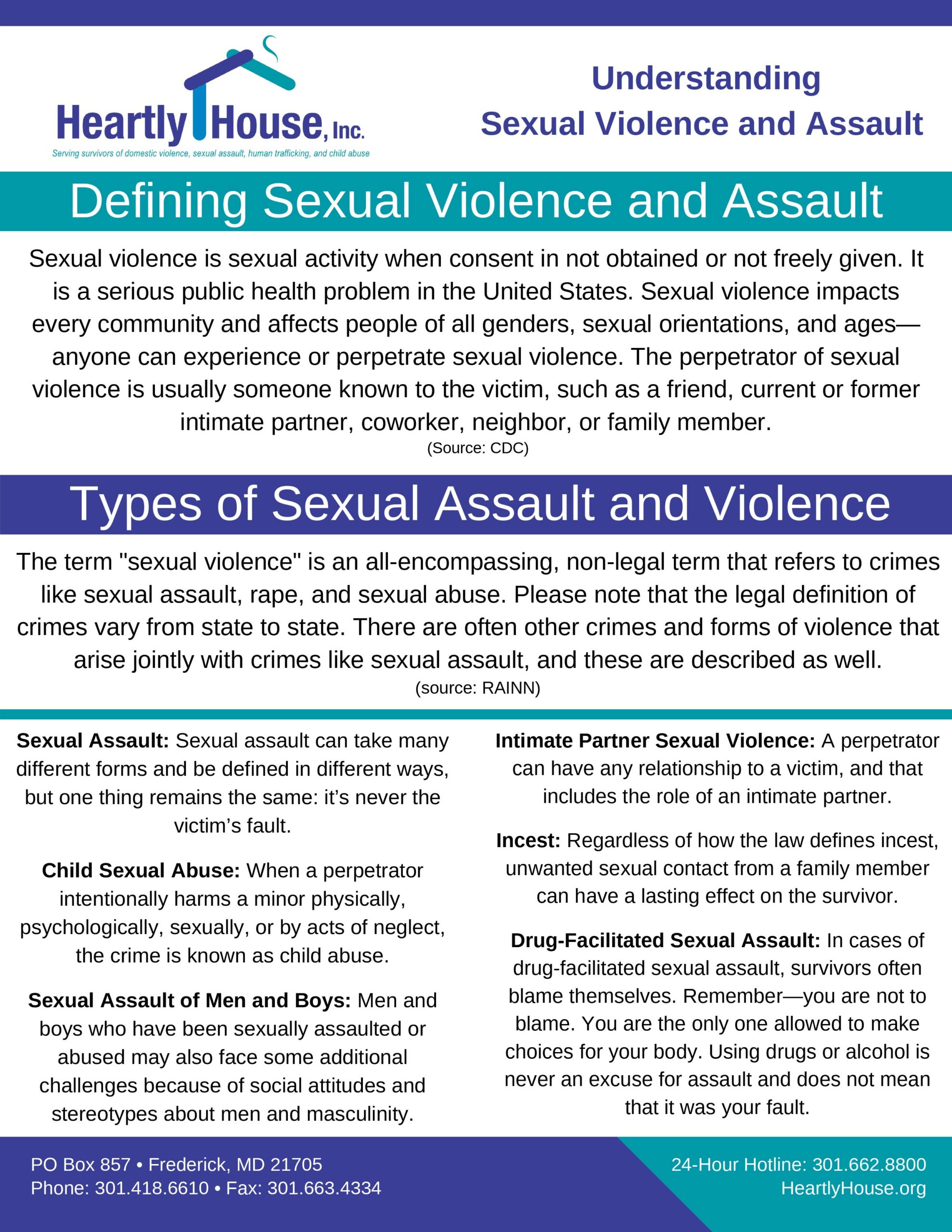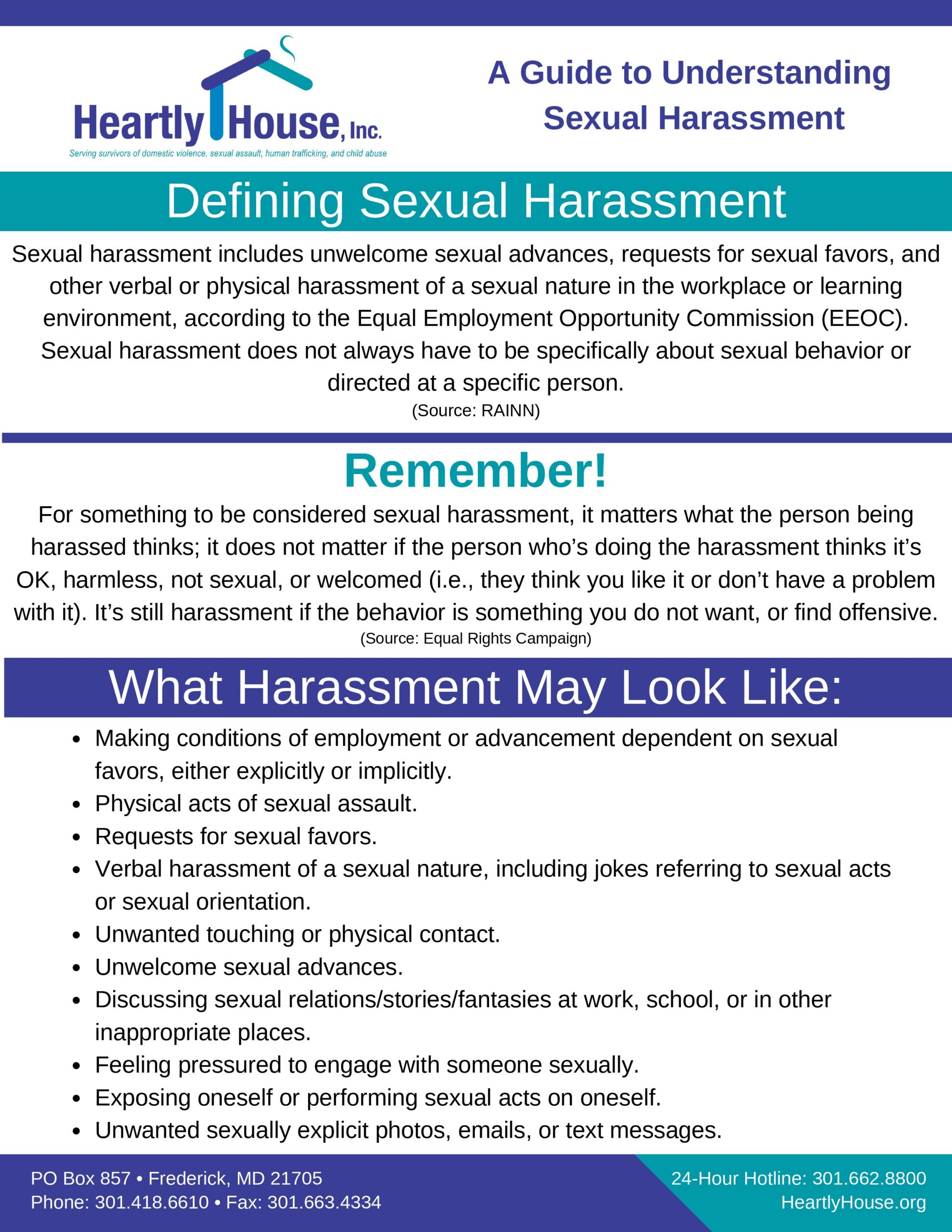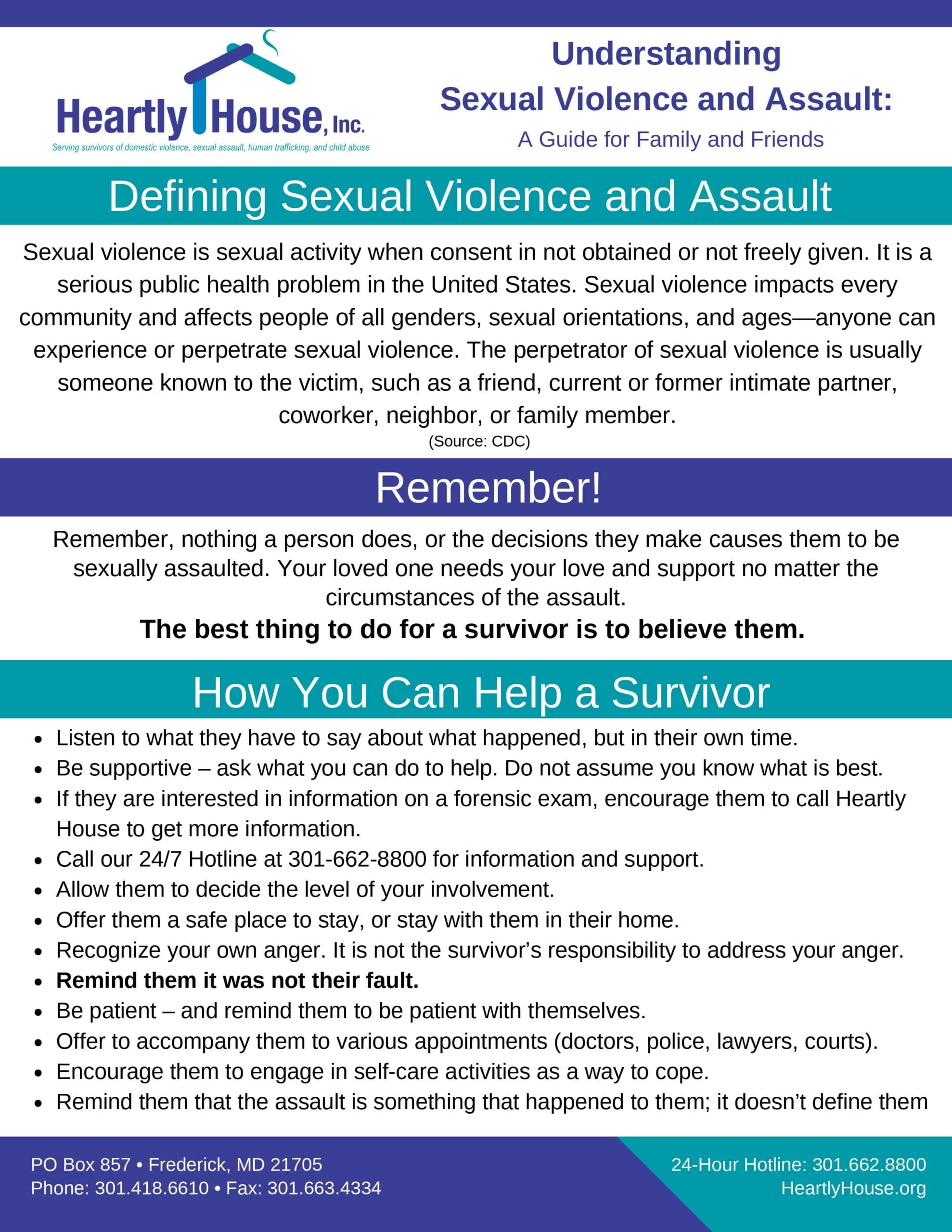What is Sexual Assault?
Sexual Assault is any sexual activity or action without freely given consent. Oftentimes, the perpetrator is someone known to the survivor, such as a friend, family member, current or former intimate partner, co-worker, or neighbor. Anyone can be a perpetrator or experience sexual assault, regardless of age, gender, or orientation.
Nothing a victim does makes them responsible for a sexual assault, and you can help a survivor by listening to them, believing them, and offering them your support.
What is Sexual Harassment?
Sexual Harassment includes all unwanted sexual advances, requests for sexual favors, and other verbal or physical pressure or intimidation. These actions are considered harassment if they are unwanted by the person the actions are directed at. It’s irrelevant if the person doing the harassing thinks it’s harmless or welcome.
Sexual Harassment in the Workplace
Sexual Harassment can happen anywhere. Workplace harassment is harassment that happens in a professional environment, and can create unwarranted obstacles for job stability or career advancement.
What does harassment look like?
Physical acts of sexual assault
Unwanted touching or physical contact
Feeling pressured to engage with someone sexually
Unwanted sexually explicit photos, emails, or text messages
Discussing sexual relations, stories, or fantasies in inappropriate settings
Exposing oneself or performing sexual acts on oneself
Verbal harassment of a sexual nature including jokes referring to sexual acts or sexual orientation
How can I prevent sexual assault and harassment?
Sexual assault and harassment can be prevented or stopped through bystander intervention. By following the 5 D’s of bystander intervention, you can help make a difference.
By following the 5 D’s of bystander intervention, you can help to make a difference.
Distract – Take initiative to indirectly confront and deescalate the situation.
Direct – If it’s safe, address the perpetrator directly and ask them to stop.
Delay – If it’s safe, talk to the victim after the incident is over.
Document – If possible, document the incident by filming it on your phone. Be sure to include the time, date, and location
Delegate – Seek out a person of authority to deescalate the situation.
Heartly House Resource Guides
Interested in Learning more?
Our online resources can help you to understand, identify, and prevent abuse.





